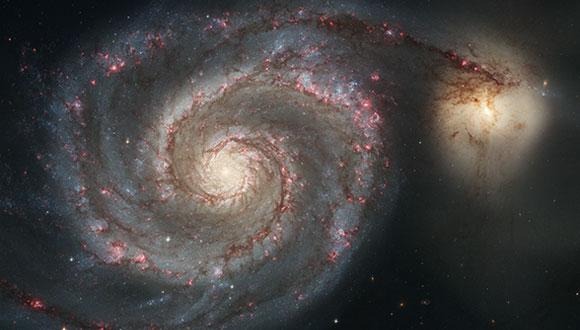Astronomy & Astrophysics Seminar
Shir Avraham & Nadav Naor, TAU
Link to recording (TAU users only) >
Zoom: https://tau-ac-il.zoom.us/j/87230679135?pwd=Y1duRlArUkJwSnhaaXVscUU0azY3Zz09
Speaker 1: Shir Aviram, TAU
New large quasar samples in the Fifth Generation of the Sloan Digital Sky Survey
Quasars are luminous objects that provide insights into the formation of supermassive black holes (SMBHs) and galaxy evolution. I will present an exploratory study based on the ongoing fifth generation of the Sloan Digital Sky Survey (SDSS-V) and its unique dual-hemisphere, wide-field and multi-object spectroscopic capabilities, with the aim to create a comprehensive, all-sky quasar catalog. Targets were selected all over the sky using data from the WISE and Gaia missions, aiming to address gaps in previous quasar observations. The novel, all-sky selection methods are highly efficient, providing a sample of over 90,000 spectroscopically confirmed quasars, with tens of thousands of newly identified quasars in the southern hemisphere. Following detailed spectral analysis, I will demonstrate that the sample covers a wide range of luminosities, black hole masses and accretion rates, and reaches redshifts up to z~5. . The distributions of these properties are highly consistent with the previous quasar catalogs, establishing a robust reference for future southern and/or time-domain surveys, while enhancing and complementing our understanding of quasar demographics and SMBH evolution.
Speaker 2 : Nadav Naor, TAU
A possible accretion mechanism onto galaxies: Rotating cooling flows
The cooling flow phenomenon refers to quasi-hydrostatic gas within a gravitational potential well that loses energy to radiation, causing the gas to slowly contract and accumulate at the center. Cooling flows were first discussed in the context of galaxy cluster halos, where they were found to be inconsistent with X-ray observations. More recent observations of gas in galaxy-scale halos have however not replicated this inconsistency, encouraging the study of cooling flows as the dominant accretion mechanism onto Milky-Way mass galaxies.We study the physical characteristics of rotating cooling flows, i.e., cooling flows with angular momentum, which constitute a plausible approximate model for galaxy accretion. Using a numerical simulation we demonstrate that initially hydrostatic CGM form a steady-state and axisymmetric inflow, and remain at a temperature near the virial temperature (∼ 10^6 K) all the way down to the galaxy disc. We also compare our numerical solution with various analytic approximations of rotating cooling flows.
Seminar Organizer: Dr. Jonathan Stern


